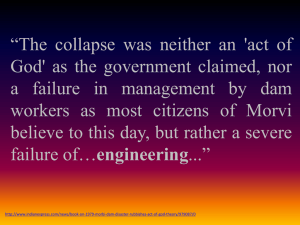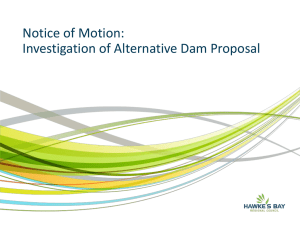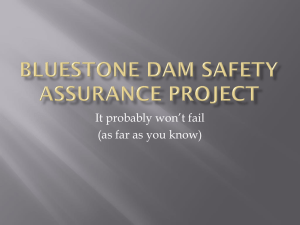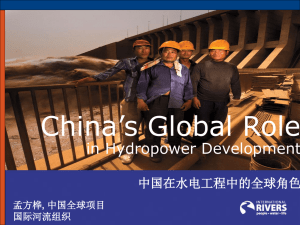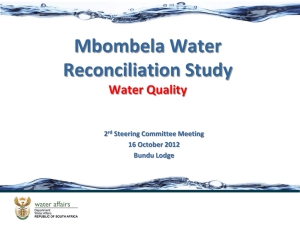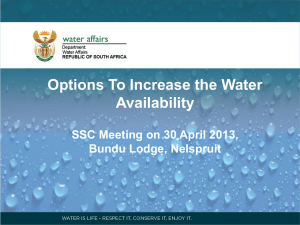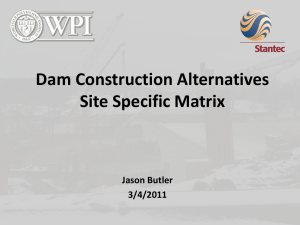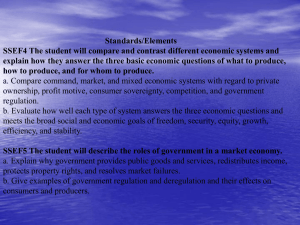Introduction
advertisement
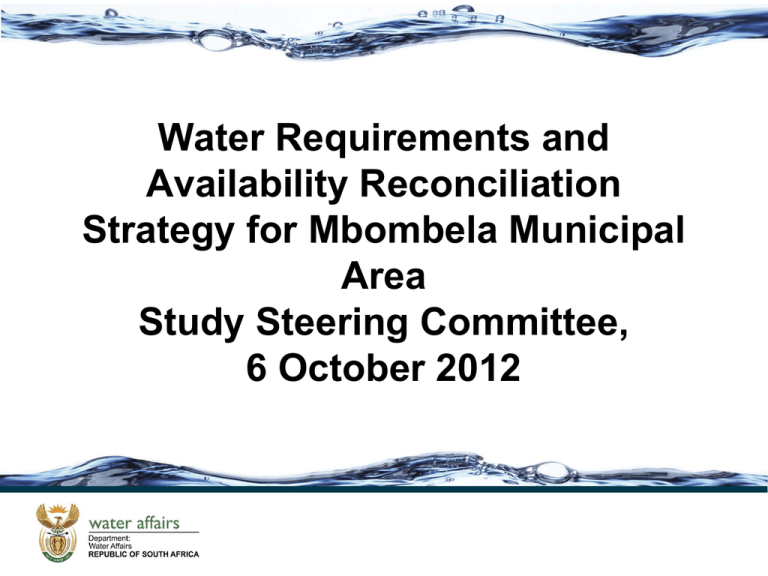
Water Requirements and Availability Reconciliation Strategy for Mbombela Municipal Area Study Steering Committee, 6 October 2012 Introduction • Water Resources Infrastructure and Supply – Where is the water currently coming from and who is it being supplied to? • Water availability – How much water do we have? • Water Requirements – How much water do we need, now and in the future. • At the 1st Study Steering Committee Meeting the background and baseline information to the study was presented. • The purpose of this meeting is to present the Preliminary Strategy. • Based on guidance obtained from the SCC, the Preliminary Strategy will be updated into a Final Strategy • The Strategy report will: – Identify resource management and development options, and – Recommend and sequence management and structural reconciliation interventions. • A Strategy Maintenance phase will follow on from this study. General Principles • Sound water management principles supported by policies and regulations of the Department of Water Affairs and the vision of the Inkomati CMA as captured in their CMS. • Recognise South Africa’s International Obligations. • Balance the social and economic water requirements and the protection of the environment to achieve sustainable development. Principles cont. • Ensure that water is used efficiently. Principles cont. • The following founding principles for water allocation in the Mbombela LM can be considered. • Principle 1: Water for basic human needs in the study area must be made available. • Principle 2: The Ecological Water Requirements (EWR) must be met as soon and as best as practicable. • Principle 3: Water for economic growth in the study area, within the policy parameters of the government, will be taken into account. • Principle 4: This study is not focussing on expansion in irrigation and forestry. Water conservation and water demand management • One of the general principles of water allocation is that water use must be efficient. • Hence, before DWA can approve a water use licence the efficiency of the existing water use must be clearly demonstrated. • A WC/WDM analysis has therefore been carried out to quantify the water supply situation in terms of acceptable benchmarks. • Benchmarks: – Per/capita water use – Water use per household – Non-revenue water – Losses/unaccounted for water Nelspruit White River / Rocky Drift Hazyview Nsikazi North Nsikazi South Karino/Plaston corridor Matsulu Irrigation: Overall conclusions Irrigated agriculture in the Mbombela Municipal area is generally under serious threat due to a number of key factors including: • Reducing assurance of supply due to growing erosion of available water resources to other sectors • Reducing water quality • Rapidly escalating pumping (electricity) costs which are effectively forcing higher levels of water use efficiency. • Low morale in the agricultural sector (affecting investment and productivity). • Consequently the irrigation sector is unlikely to be willing to further reduce its supplies through water trading. • Cutting back on unlawful water use is one way of making more water available to legitimate users, or for further licence allocations. Over-Arching Strategies • Strategies to reduce water demand are common to all demand centres and will be the first priority in terms of implementation. • Strategies to increase the water resources can be broadly grouped into a Crocodile strategy, and a Sabie strategy. • If and when absolutely necessary a new dam in the Crocodile catchment could be constructed to meet the future water requirements of the demand centres in the Crocodile (not the Sabie) Crocodile - Infrastructure options • The following possible structural interventions were identified: – – – – – Boschjeskop Dam Montrose Dam Mountain View Dam Raising the Ngodwana Dam Strathmore off-channel dam • Preliminary costing of these dams has been completed. • Based on this, the Montrose Dam and raising of the Ngodwana Dam can be eliminated as options. • The Boschjeskop Dam could provide enough additional water for domestic and industrial use in the Mbombela municipal area. Crocodile over-arching strategy • The economic optimum for Mountain View and Strathmore Dam is at a much higher yield than the future municipal requirement. • The opportunity for a joint scheme with the irrigation sector therefore presents itself. • While the Mountain View and Strathmore Dams are downstream of the municipal area, the benefit of these dams can be realised as follows: • Water can be supplied to Matsulu under gravity. • Water currently supplied to irrigators in the lower Crocodile from the Crocodile system can be supplied from the Mountain View hence freeing up water for other urban centres in the Crocodile. • The ecological implications of this water ‘swop’ will need to be evaluated. Sabie strategy • A review of the ecological requirements could allow a useful increase in use. • Other users in catchment (outside MLM)must be part of planning and saving water. • Construction of a dam is very undesirable. • Transfer from Crocodile Catchments is not an option. • WC/WDM, Trading, Groundwater etc offer Water Balance For Nelspruit Without Interventions Intervention Options for the Crocodile Envisaged Intervention Expected Expected Time to Starting Full Yield/ Benefit million m3/a Date Saving (Y) WC/WDM (15%) 1.9 2014 5 Removal of IAPs 2 2014 16 Groundwater development (Mataffin) 0.1 2014 1 Dam Option (e.g. Boschjeskop) 19.5 2018 5 Water Balance for Nelspruit with Interventions – No Dam Water Balance For Nelspruit With Interventions & Boschjeskop Dam Conclusions For Nelspruit • Low growth water demand scenario can be fully satisfied over the entire planning horizon without a dam • 15% WC/WDM saving for Nelspruit is very conservative. Current use is 721 litres/capita/day. Nelspruit should be able to save at least 30% • With 30% WC/WDM saving, the high growth water demand scenario can be satisfied over most of the planning horizon • Boschjeskop Dam, or alternative dam, would provide the necessary water (at high cost) but (i) should be postponed as far into the future as possible (ii) cannot be considered until WC/WDM is successfully implemented. Urgent Actions Required • Development of the WC/WDM plan and implementation strategy • Current IAP removal plan needs to be studied to check whether IAP removal can be accelerated • Borehole siting for Mataffin Towards Final Strategy – Further Information Required • Extent of IAP infestation upstream of Kwena Dam • Extent of unlawful irrigation water use in Crocodile River Catchment (and Sabie) • Area of fallow irrigation lands with water entitlements which can possibly be earmarked for purchase


